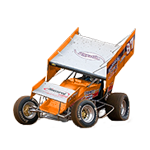Copy link to clipboard
Copied
Hi,
I have two vector layers.
Layer 1 contains a shape and Layer 2 contains just the outline of the shape (but cleaned up slightly - so it looks like a silhouette to the human eye, but it is not a one-to-one pixel-perfect match).
>> Note, there are 36 such shapes and they are quite complex, so it's something I would like to semi-automate.
What I wish to do is extract just the middle vector paths from the shape on Layer 1 (or conversely delete the outer edge of Layer 1), so that I have one layer with the silhouette and the other layer with just the inside lines.
The middle lines in the shape are made up of different paths, some of which are on the border, so I would need to cut the path away wherever it was on the border.
If I do this and put them on top of each other, I will just see the original shape.
The purpose of this is to create a file for laser cutting in steel. The silhouette is a cut, the inside lines are etches. One workaround would be to etch first and then cut. But I still want to know if it is possible to extract the inside lines.
See simplified example below:
 2 Correct answers
2 Correct answers
Robert,
I believe Pathfinder>Divide is your friend, followed by your first deselecting (just Click an empty spot) and then deleting unwanted path segments with the Direct Selection Tool.
Or the Shape Builder.
Question: Can I do this without painstakingly identifying which bit of which path has become the border all the way around, then manually snipping out that bit and deleting it to leave just the inside bits?
I'm fairly certain the answer is no. Other than some discrete special features like Draw Inside mode, Illustrator makes no distinction between "inside" and "outside". And, as we may have already established, other than Select > Inverse, there is no method for predicating a selection upo
...Explore related tutorials & articles
Copy link to clipboard
Copied
A simple Pathfinder cut ? Not sure what else you need to know or what you have tried.
Mylenium
Copy link to clipboard
Copied
Thanks for the suggestion... that's what I have tried, but none of the options seem to do what I need them to do. I will persevere though if you think that should work. Cheers Robert
Copy link to clipboard
Copied
Based on your example, it looks like you want all of Layer 1's "outline" deleted, but your description suggests you want the deletion somehow predeicated upon the contents of layer 2. I'm not sure I understand it fully with only the simplified example to go on. Either way it's all doable via relatively simple path editing, but I have doubts as to whether you'll find a "semi automatic" solution.
Copy link to clipboard
Copied
Thanks John - Yes, correct - I want to delete the outline.
I haven't worked much with vector graphics. I could think of a few ways to delete any thickness of an outside border of a raster image in Photoshop, but I can't work out how to do the same with a vector graphic (i.e. cut all the paths right at the border and delete the bits that are on the border.)
I can do it manually, but it is tedious.
By semi-automate, I meant I was hoping there was a vector equivalent of a Photoshop function... e.g.:
> "magic wand" select everything outside of the shape
> expand this selection by 1 or 2 pixels so that it eats into the border of the shape
> press delete
> done!
Copy link to clipboard
Copied
I was hoping there was a vector equivalent of a Photoshop function... e.g.:
> "magic wand" select everything outside of the shape
> expand this selection by 1 or 2 pixels so that it eats into the border of the shape
> press delete
> done!
Unfortunately, you'll have to clear your head of all that pixel theory, along with the raster-based selection methods of Photoshop.
I haven't worked much with vector graphics. I could think of a few ways to delete any thickness of an outside border of a raster image in Photoshop, but I can't work out how to do the same with a vector graphic (i.e. cut all the paths right at the border and delete the bits that are on the border.)
Well this at least offers some insight into your desired result. Perhaps the following will help realign your thinking and turn on a light or two...
- The "outside border" of your graphic is a path.
- The path has been assigned a stroke. That is, it's been given a color and a "weight" (thickness).
- While you can't select and delete a portion of a stroke's thickness (presumably to make it thinner), the weight of a stroke can be changed at any time. See the Stroke panel.
- Also, a stroke that is applied to a closed path can be assigned to sit directly on the (center of the) path, or inside the path, or outside the path. See the Stroke panel.
Copy link to clipboard
Copied
Robert,
There are fundamental differences between AI and PS, a crucial one being that in AI you work with (more or less independent) objects that can be edited/changed/deleted/copies/whatever in parts or as a whole.
It might be as simple as hiding Layer 2 (in the Layers panel).
Or as simple as clicking the outline/silhouette (which presumably consists of a path with a stroke and no nofill, then press Delete; but that depends on the actual structure/arrangement of the artwork, one possibility that you have a Group containing both the inner parts and the outline/silhouette. You can see that in the Layers panle with Layer 1 expanded so you can see its objects; you can also Click into groups and select individual objects/paths there.
As I (mis)understand it, to get started, you can try this, which allows you to work directly into a Group:
1) Hide Layer 2 (Layers panel), and click Layer 1 (so you work (only) in that);
2) Switch to the Direct Selection Tool (white arrow), then click an empty spot on the Artboard/Workspace;
3) Hold Alt/Option and Click (not ClickDrag) on only the the outline/silhouette, then press Delete.
You can Show/Hide Layer 2 as desired.
The best way(s) to do it easily for the 36 shapes depends on their structure, so anything you say/show about that can help determine the best one(s).
Copy link to clipboard
Copied
@John Mensinger @Jacob Bugge @Mylenium
Thanks again all,
I have just made a second graphic to explain it a little better:
The four steps below show what I am trying to achieve.
Assume I start with image 1. There is no distinction between paths on the border and internal paths. The border is made up of paths that may swing inside the shape (so I can't just turn off a layer to remove the border - it's all consolidated with overlapping paths).
In step 2 I have created a border using Pathfinder. Easy.
By step 4 you can see I wish to have cut away the border and only leave the bits of paths that are inside the border. This is the inverse operation to step 2 and I would have thought it should be possible to do simply.
Question: Can I do this without painstakingly identifying which bit of which path has become the border all the way around, then manually snipping out that bit and deleting it to leave just the inside bits?
Thanks again
Robert
Copy link to clipboard
Copied
Robert,
I believe Pathfinder>Divide is your friend, followed by your first deselecting (just Click an empty spot) and then deleting unwanted path segments with the Direct Selection Tool.
Or the Shape Builder.
Copy link to clipboard
Copied
Question: Can I do this without painstakingly identifying which bit of which path has become the border all the way around, then manually snipping out that bit and deleting it to leave just the inside bits?
I'm fairly certain the answer is no. Other than some discrete special features like Draw Inside mode, Illustrator makes no distinction between "inside" and "outside". And, as we may have already established, other than Select > Inverse, there is no method for predicating a selection upon existing, unselected objects of like properties.
So really, the best I can offer is manual selective deletion with the Shape Builder.
Select all, choose the Shape Builder, hold down Alt, and click the unwanted path spans...
Copy link to clipboard
Copied
@John Mensinger @Jacob Bugge @Mylenium
Thank you all for your patient and expert advice!
I think the shapebuilder option may be the closest I can get to a "quick" solution.
Cheers,
Robert
Copy link to clipboard
Copied
For my part you are welcome, Robert.
Get ready! An upgraded Adobe Community experience is coming in January.
Learn more






